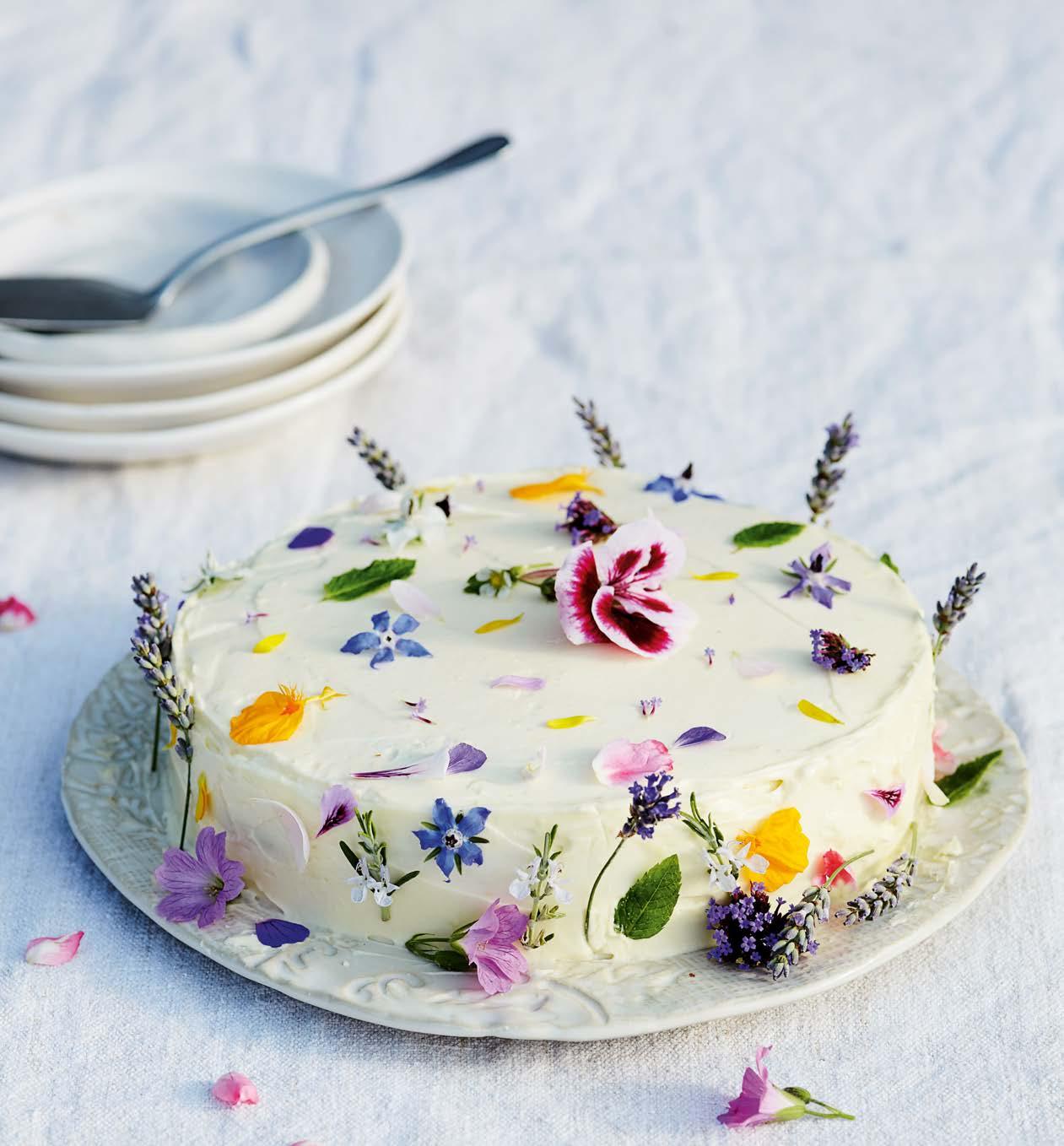
11 minute read
Garden Buildings Chosen wisely, a
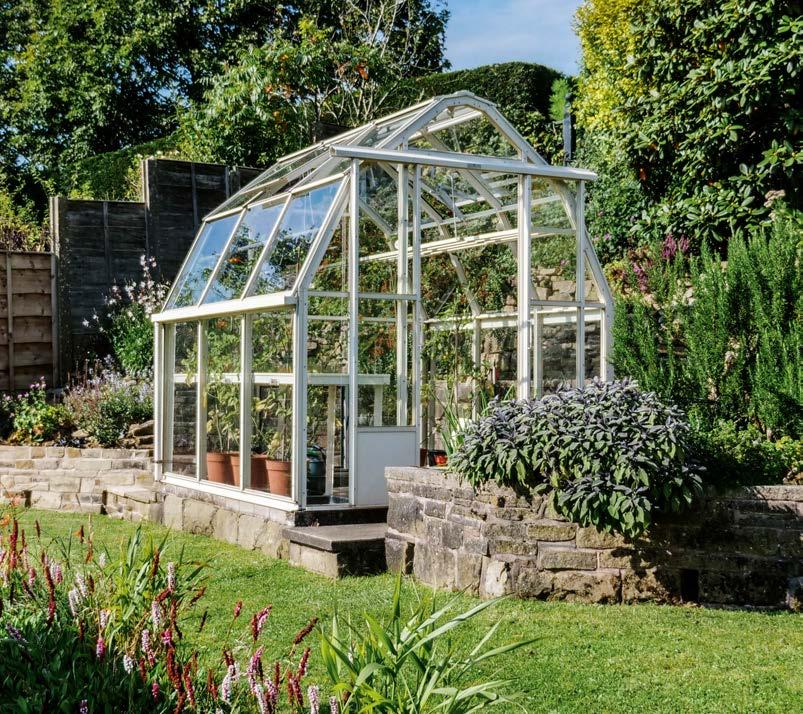
Left Some larger greenhouses can double as grand entertainment spaces. Alitex greenhouses start from £12,950. Below An aluminiumframe greenhouse by Hartley Botanic. S pending more time at home over the past year may have highlighted the need for extra space. Investing in a garden building, whether for growing plants, working from home, relaxing or simply creating more room is a more simple and costeffective solution than a formal house extension. Moreover, a good-quality greenhouse, summerhouse or shed can still present a desirable proposition for prospective house buyers at some future point.
By the time summer comes around and thoughts of outdoor growing or entertaining surface, the moment for putting up garden buildings will have passed. Given waiting lists and build times, the earlier in the year you place your order, the better.
SPACE TO GROW
If you entertain dreams of an exotic plant collection, a harvest of tomatoes fit for the Spanish festival La Tomatina, or neat rows of seedlings waiting to be planted out when the weather warms up, a greenhouse could be a game changer. A warm windowsill will take you only so far, after all. There are as many types of greenhouses as there are tomato varieties and they range from cheaper PVC structures found in the middle aisle of supermarkets to period-style constructions that can double as entertaining spaces. You’ll find everything in between, but greenhouse fundamentals are the same whatever the scale: buy the largest you can afford, position it well and keep it properly ventilated.
After assessing your need and budget, think hard about where to locate your structure. Be aware of the microclimate of your garden, particularly if you are in a frost pocket. A greenhouse will ideally sit east-west on a south-facing spot so as to make the most of the available light and heat. A sheltered location out of prevailing winds is desirable, and it makes good sense to keep the structure away from deciduous or sap-oozing trees.
Most greenhouses are built using horticultural glass or toughened glass. Horticultural glass is a traditional choice, and while it does let in all possible light it also breaks easily because it is so thin. Overlapping panes will also need regular cleaning. On the other hand, toughened glass, which lets in slightly less light, is more robust, typically withstanding assault by football but not cricket ball.
Construction materials vary too, but the two most common are wood and aluminium. Wood has long been a favourite option for its aesthetics, but it comes with a maintenance warning: constantly exposed to the elements, wood needs regular care. Gabriel Ash (01242 662926; gabrielash.com) and Woodpecker Joinery (01889 562610; woodpecker-joinery.co.uk) are two specialists who source sustainable hardwood timbers that are high in naturally occurring oils. An aluminium capping can also help preserve




roof timbers. Aluminium greenhouses from the likes of Dovetail Greenhouses (0121 6731509; dovetailgreenhouses.co.uk), Hartley Botanic (01457 819155; hartley-botanic.co.uk) and Alitex (01730 826900; alitex.co.uk) will need less maintenance over time. They’re also more lightweight and can often be powder-coated in a colour of your choosing.
All greenhouses need to be secured to a good base. Top-of-the-range models from suppliers such as White Cottage Greenhouses (01270 753826; whitecottage.co.uk) will be built on a dwarf wall that you can finish to match your house. The wall stabilises what is a quite a large structure and allows for the addition of external coldframes. A dwarf wall isn’t essential however, although a good level base is. Some structures, such as those from Pure Greenhouses (0333 2005833; puregreenhouse.co.uk) and Vitavia (01473 218100; vitavia.co.uk), reach to the ground and are set on a concrete base, offering a direct growing space ideal for vines, tomatoes and melons. Smaller greenhouses, especially minigreenhouses, need a weight at the base to hold them down. Bags of compost will do this job well.
It is essential to moderate temperature in a greenhouse. Ventilation is key and prevents disease build up. Sophisticated models will have automatic, wax-based, sensor-controlled vents that open and shut with the weather. Others will be manually operated. In summer, shade cloth or greenhouse paint can keep out the worst of the sun. In winter, warm-water pipes inserted in the base of the greenhouse will raise temperatures, but you can also use a dedicated greenhouse heater.
Finally, allow room for greenhouse staging on which you will place your immaculate trays of cuttings and seedlings. Most of the larger firms will supply pieces designed to suit the specification and style of their buildings. For many other essential greenhouse accessories, including crucial watering arrangements, try Greenhouse People (01782 385400; greenhousepeople.co.uk).
Top left The Victorian Lean-to with a dwarf wall for coldframes, by White Cottage Greenhouses. Top right Manual vents in the greenhouse at Llanerchaeron, a National Trust property. Above left Cedar is commonly used for wooden greenhouses. Wisley Greenhouse with dwarf wall, Gabriel Ash. Above right A thermostatically controlled heater will help keep greenhouses frost-free. Alitex Edwards heater, £420.
SPACE TO WORK

When there isn’t sufficient room for storage or even enough places to work in the house, a good shed can be a lifesaver. He-sheds and she-sheds are voguish terms for the spruced-up spaces once only associated with garden tools. As home-working has become more prevalent, a proper outdoor room has become more than a space to clean bicycles or have a quiet cup of tea. Insulated, heated, electrified, connected to Wi-Fi and removed from the wider household, they can rival any indoor space in terms of comfort.
Before erecting a structure, check local planning regulations. If a shed is large in relation to the garden and the footprint of the house, tall in relation to the fence, or close to neighbours, it could require planning permission, especially if the property is listed or you live within a conservation area. A good supplier should be able to advise on this and help you navigate through the process.
Buildings that will do more than house garden equipment will need to have good lighting. Basic but capacious sheds, starting at around £500, will have a strip of polycarbonate for windows, but for working spaces good security is essential. You’ll need secure doors, possibly bi-fold to let in additional light and a summer breeze, and proper windows with latches. You could even install an alarm to be extra safe.
If the shed is set close to the house, electric cables can be run directly from the mains. Or you could investigate using solar power. The Posh Shed Solar
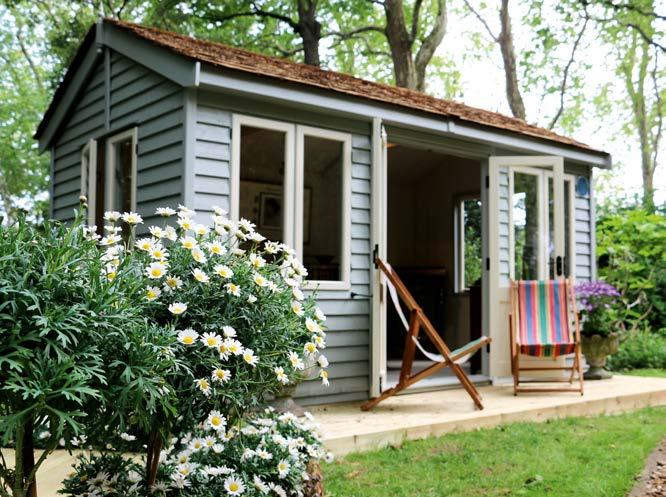
Top Heating, lighting and insulation feature in the elegant Expression Garden Room by Green Retreats. From £18,245. Above Smart overlap cladding is used on the Bloomsbury, by Malvern Garden Buildings. Hub with Light, from £209, works by collecting daylight and sunlight through a solar panel mounted on the shed’s roof. The kit comes with a 5w solar panel, 12vLED strip light and main HUBi unit (01544 387101; theposhshedcompany.co.uk). For sheds already fitted with these features, expect to pay £3,000 to £15,000, depending on size and spec.
Simple sheds can be modular and assembled in less than a week without the need for a concrete pour on the base. Vinyl bases are less permanent and still
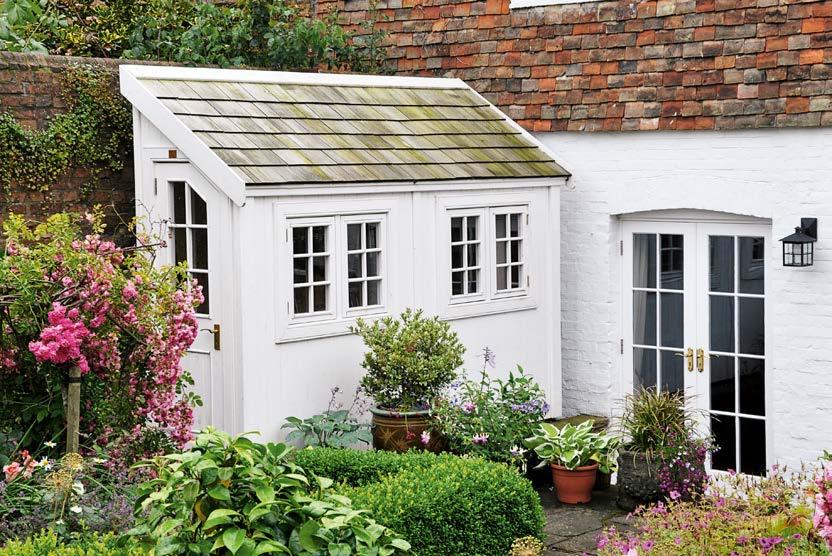
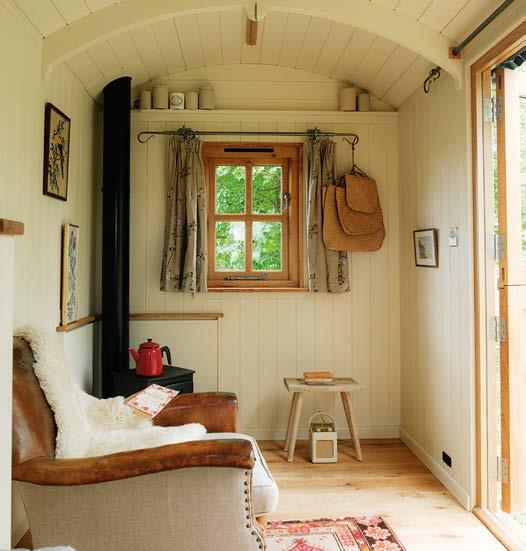


need groundwork often not provided by the shed supplier. Designs may be modern, such as those from Green Retreats (01296 325777; greenretreats.co.uk) or Forest (0333 3213142; forestgarden.co.uk), or traditional – try The Posh Shed Company and The Cosy Shed Co. (01623 861364; thecosyshedco.co.uk) For shepherds huts, look at Plankbridge (01300 348414; plankbridge.com).
A roof will influence the look of the building – choose from modern with a pent green roof and clean lines, or steeply apex and classically English with slate tiles or cedar shingles. Malvern Garden Buildings (01932 783999; malverngardenbuildings. co.uk) offers the Bloomsbury Garden Retreat, modelled on a shed used by Virginia Woolf. It features barn-style cladding, four pairs of opening windows and insulation to walls and ceiling. Crane Garden Buildings (01760 444 229; cranegardenbuildings.co.uk) has developed a portfolio of sheds and summerhouses in partnership with the National Trust, ranging from the Blickling, with its exterior log store, to the Ickworth, with dual-aspect windows. And Crane’s Classic Garden Office is designed with home working in mind.
Spring is a good time to give more functional sheds a lick of paint. Treat exterior wood with Ronseal, Cuprinol or Sadolin, wash down windows, and have a good clear out. You can boost storage by adding hooks for hanging tools. A cedar potting tray from Alton Greenhouses (01782 385409; altongreenhouses.co.uk) or the Rowlinson Premier Potting Station from Marshalls (01480 774555; marshallsgarden.com) could be just what is needed, while Selina Lake’s book, Shed Style (£19.99, Ryland, Peters & Small), illustrates just how beautiful these valuable spaces can be.
Top left Bespoke lean-to half-shed. The Posh Shed Company, £6,120. Top right Plankbridge shepherds huts start from £23,400. Above left A pent pitch roof is common on contemporary designs. Above right Scotts of Thrapston specialises in summerhouses, but they can double as offices.
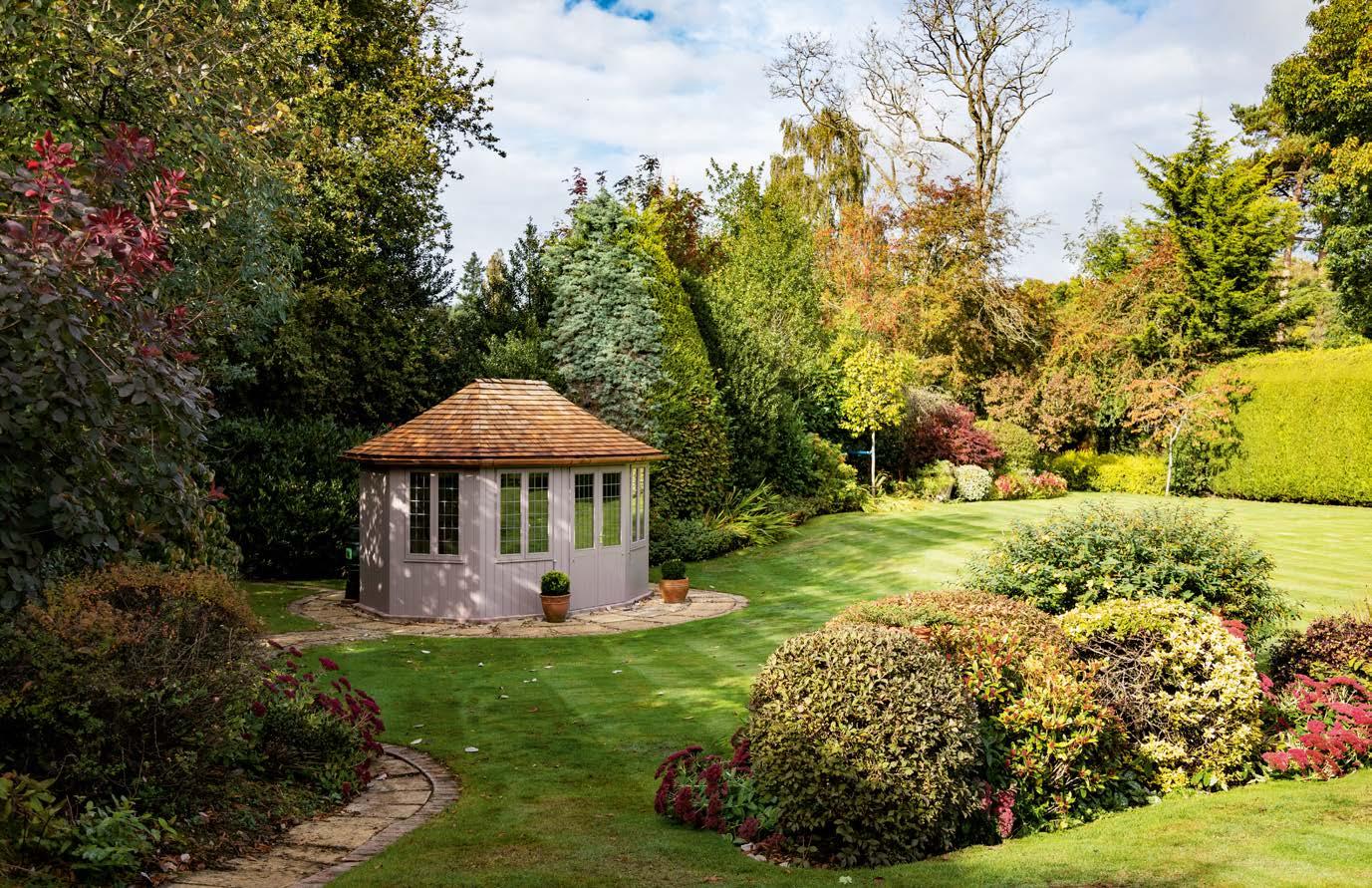
SPACE TO ENTERTAIN
An English summer is cherished largely because it can be so fl eeting and comes with the imperative to make the most of every clement day. For this, summerhouses and their glamorous cousins, orangeries and conservatories, are a boon. These cherished spaces have been on our wish lists for centuries, with many grand houses including a classically themed summerhouse folly within sight of the main house. For gardeners, the timeless summerhouses at Hidcote are the benchmark for what can be achieved of a building like this.
Mull over materials that would suit your garden and what your budget will allow. Basic tongue-andgroove kits are relatively inexpensive and can be set up in a few days – Scotts of Thrapston (01832 732366; scottsofthrapston.co.uk) off ers a range of sizes and designs. But if you’d like something with a classical bent or even a loggia, contact a builder. Haddonstone (01604 770711; haddonstone.com) and Redwood Stone (01749 677777; redwoodstone. com) off er products with a classical mood but why not make a small holiday out of visiting historic properties for inspiration? Think about scale and design and the eff ect each will have on your garden.
Orangeries and conservatories are in a league of their own and can add signifi cantly to the footprint of the house. These structures were traditionally separated from the main house by a door, but the contemporary taste is for a large, open-plan space incorporating a kitchen, dining table and even a sofa and entertainment area. With direct access to the garden, usually with large windows and glass doors, they off er a seamless transition between indoors and out. Specialists include Vale Garden Houses (01476 564433; valegardenhouses.co.uk),
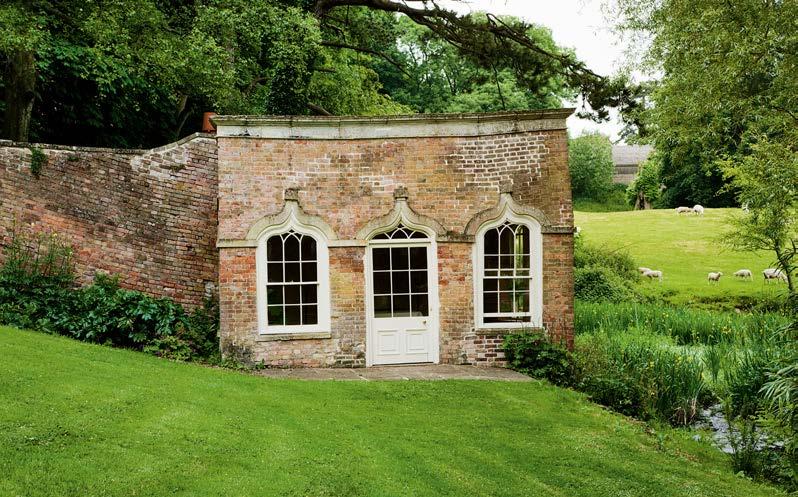
Top The 4x4m Sun Ray Garden Room with a cedar shingle roof, Scotts of Thrapston. Above The Grade II listed summerhouse at Newark Park, a National Trust property in Gloucestershire.


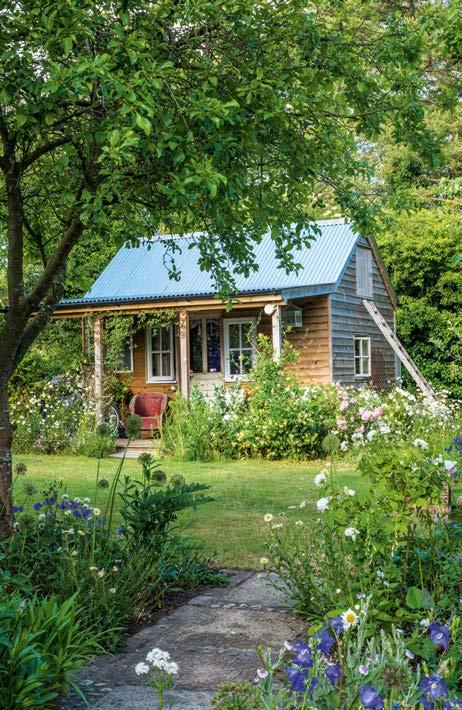
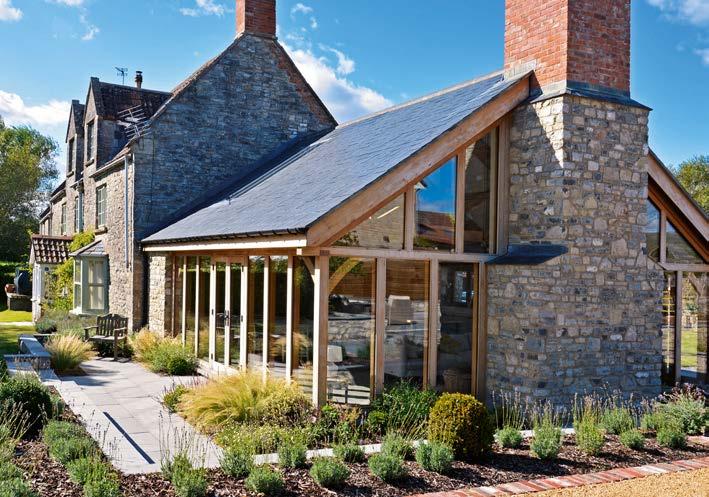
David Salisbury (01278 804123; davidsalisbury. com) and Westbury Garden Rooms (01245 326500; westburygardenrooms.com). Each of these will offer a range of designs intended to blend with the architectural period of the house, so look out for Georgian, Victorian and Edwardian themes in particular. One of the simplest ways to add a conservatory without upheaval is to use the side return. These are modest in scale but can add a critical extra couple of metres to a house.
Timber-framed garden buildings such as those from Oakwrights (01432 353353; oakwrights.co.uk) offer a distinct mood. These are bespoke structures with wide-ranging applications: garages, stables and barns in addition to regular sun-rooms and conservatories. These sunlit rooms are wonderful for lovers of exotic, tropical plants and offer a great opportunity for growing vines, melons, palms and the like. Decorate them accordingly, with a nod to the colours of the garden beyond the doors and the rest of the house behind it.
Build times are reduced when a structure is separate from the main house, or attached simply by a door, and much increased when any structural element is fully integrated with the house. Extending the house by adding a larger structure can also increase your property’s value, so while the initial outlay and commitment are greater, it may bring a significant return over the years both in terms of space and financially when you come to sell. n
Top left An Oakwrights garden room extension on a period building. Top right Sensitive planting integrates building with garden. Above left A good conservatory, like this one from Vale Garden Houses, will be sympathetic to the period of your home. Above right David Salisbury specialises in timber and glass orangeries and conservatories.
Spring is here, and Easter is beckoning, a lovely time to indulge in garden-inspired crafts and projects.

Spring into Action
A new season begins and the Easter bank holiday weekend beckons, so there’s no better time to pick up a new hobby or settle down to an enjoyable creative project


